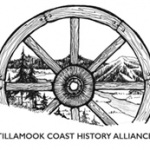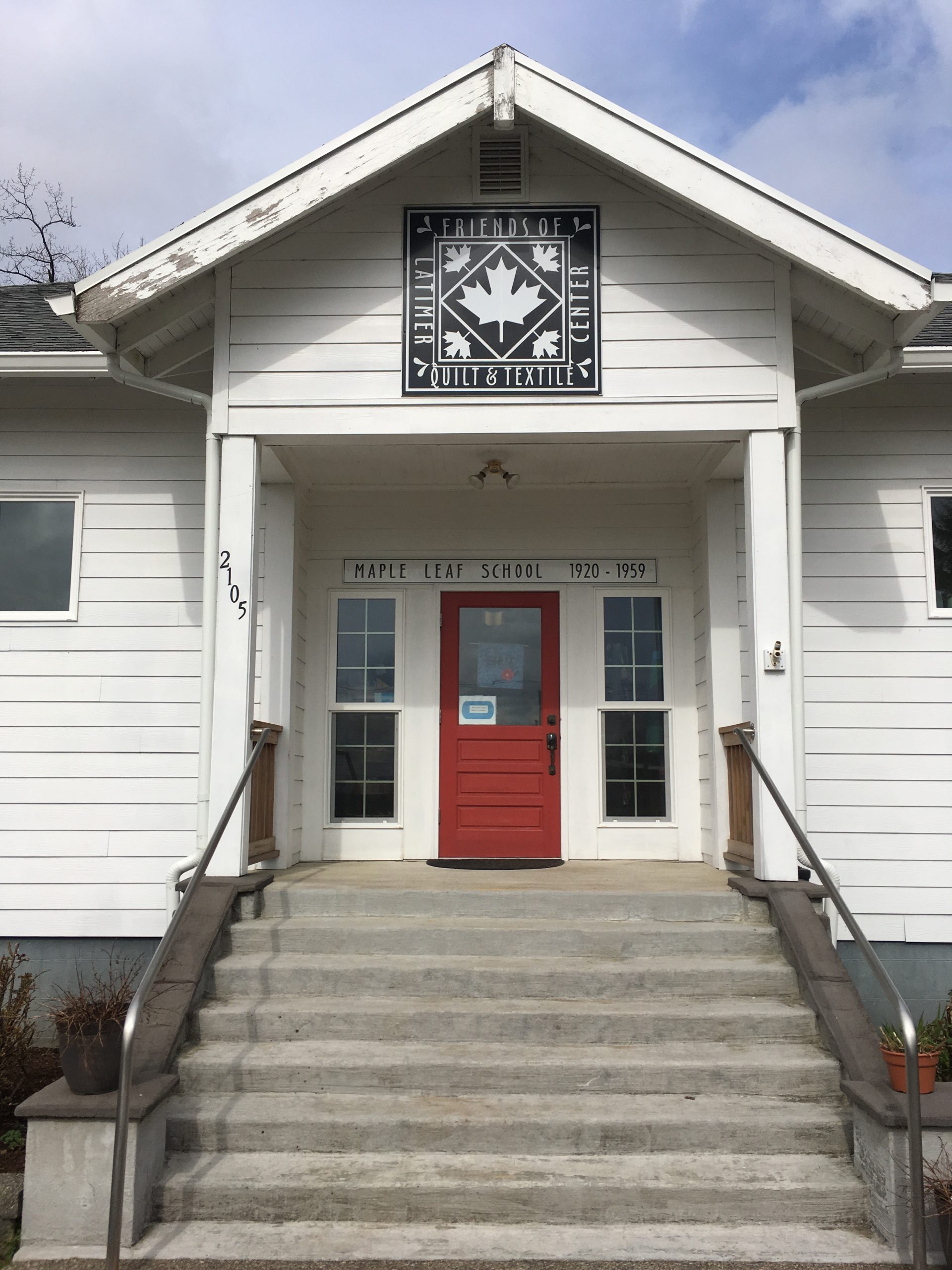By Robert G. Russell for the Tillamook County Historical Society
The Tillamook County Historical Society (TCHS) held a recent meeting in a sunny backroom of Tillamook’s Latimer Quilt and Textile Center. It was a chance to combine our monthly meeting with a special event—in this case a “bed turning.” What’s a bed turning? You’re not alone if you don’t know. It turned out that only two in our group knew what it was.
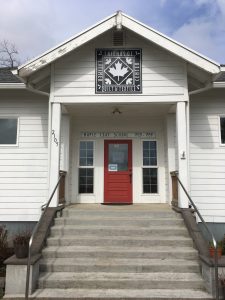
After a quick business meeting we were met by our hosts, Carol Weber and Lorraine Woodward. Both have been deeply involved in the Latimer Center for many years, and have yards and yards of quilt knowledge in their heads. They gathered us up and led us further back into the catacombs of the Latimer, eventually descending into a storage area that felt like an old-time version of Bed Bath & Beyond. There were shelves from floor to ceiling packed with bagged quilts and artwork. Lorrain explained that everything in these storage areas had been run through a careful process of cleaning and preserving, including having been frozen to remove molds and critters from any wool and silk.
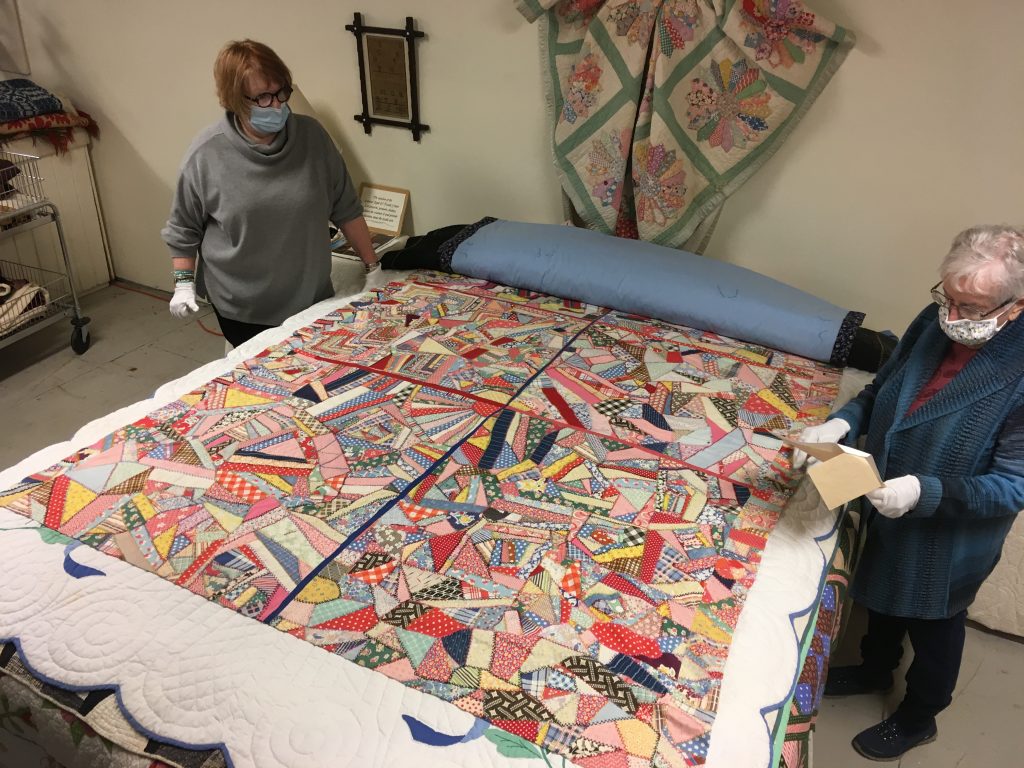
“Does anyone here NOT know what a bed turning is?” asked Lorraine. I had a moment of nervousness, then looked around and saw that almost all of our hands were up. Whew!
“A bed turning is how we show quilts and tell their stories,” Lorraine continued, peeling back the top quilt to reveal many more stacked underneath. “Today we’re starting with this one, a ‘crazy quilt’ that took over two years to create.”
We all leaned in and touched the top quilt, marveling at the truly crazy pieces of odd-sized fabric, sewn together and decorated with impossibly detailed embroidery. I heard myself say what I was thinking, “Who could possibly have time to make something like this?”
Carol took the question: “These types of quilts were mostly made by women of leisure,” she said. “They often had servants who took care of the house work and the kids, so they could take on a project like this. At the time, quilts were symbols of status.”
Next came a distinctive quilt said to have been made by none other than Rosa Kilchis. An accompanying piece of paper explained that Rosa was the daughter of Chief Kilchis, although there was some discussion about whether that was accurate. The quilt was bright and colorful, seemingly modern, with diametric lines breaking it into quadrants.
Carol offered some interpretation: “This is a crazy quilt, too, as you can see from the random shapes of the pieces. The story goes that the lines in this piece represent important pathways the tribe used as ways of escape.”
“To escape what?” someone asked.
There was a moment of hesitation, and then, “Us? Or maybe raiding parties from other tribes?” We pondered that for a moment, and Lorraine folded back Rosa’s quilt to reveal the next story.
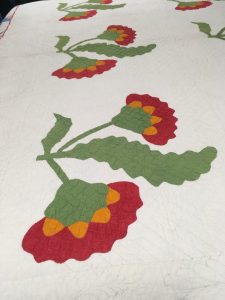
It was a wonderful event, and we all left invigorated. It underlined something we all knew: that the Latimer Quilt and Textile Center is one of the gems of Tillamook. It features rotating exhibits, interpretive tours, a research library and a gift shop. They also offer weaving instruction and sign-ups to use their amazing looms. The mission of the Latimer is to preserve, promote, display, facilitate the creation of, and provide education about textile arts. If you would like to stop by, or if you’d like to organize a bed turning for your community group, call 503-842-8622. The Latimer is located at 2105 Wilson River Loop Road, just a quarter mile east of 101.
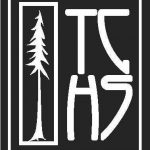 The Tillamook County Historical Society is a local non-profit dedicated to preserving Tillamook history and sharing it with the community. A charter member of the Tillamook County History Alliance, the TCHS meets once a month on the second Tuesday at 1:00PM in the Hatfield Room of the Tillamook Library, main branch. Consider joining them June 14th when Sally Rissel will lead her famous “Old Home Walking Tour” through downtown Tillamook. They will meet at the Hoquarton House at 1:00PM on June 14th.
The Tillamook County Historical Society is a local non-profit dedicated to preserving Tillamook history and sharing it with the community. A charter member of the Tillamook County History Alliance, the TCHS meets once a month on the second Tuesday at 1:00PM in the Hatfield Room of the Tillamook Library, main branch. Consider joining them June 14th when Sally Rissel will lead her famous “Old Home Walking Tour” through downtown Tillamook. They will meet at the Hoquarton House at 1:00PM on June 14th.
For more information, call Rob at 503-523-8387.
